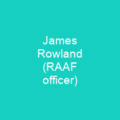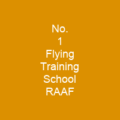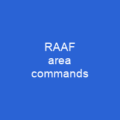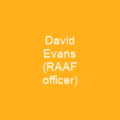Henry Neilson Wrigley: A Pioneering Air Force Commander
Imagine a time when the skies were not just a canvas for birds but a battlefield, and one man was at the forefront of this new domain. Air Vice Marshal Henry Neilson Wrigley was that man.
The Early Years
Wrigley’s journey began during World War I when he joined the Australian Flying Corps as a young officer. He saw combat with No. 3 Squadron on the Western Front, earning the Distinguished Flying Cross for his bravery and skill in the air. This early experience laid the foundation for his future command roles.
Founding Member of the RAAF
In 1921, Wrigley was one of the founding members of the Royal Australian Air Force (RAAF). He held various staff positions at RAAF Headquarters from 1921 to 1935. His role as Staff Officer (Operations and Intelligence) and Director of Organisation and Staff Duties were crucial in shaping the early structure of the RAAF.
Adopting Air Power Doctrine
A key moment in Wrigley’s career was when he initiated a proposal for the RAAF to adopt the Royal Air Force’s motto, Per Ardua Ad Astra, which translates to ‘Through Adversity to the Stars.’ This motto encapsulated his vision of the air force as a force that could overcome any challenge and reach new heights.
Commanding RAAF Station Laverton
From October 1936 to February 1939, Wrigley commanded RAAF Station Laverton. During this period, he oversaw the station’s operations and played a significant role in developing the Air Training Corps (ATC). His efforts were instrumental in preparing young Australians for future service.
RAAF Overseas Headquarters
In September 1942, Wrigley took over as Air Officer Commanding RAAF Overseas Headquarters in London. This role was not without its challenges; he had to navigate a complex relationship with Air Marshal Williams and ensure the interests of RAAF aircrew were protected.
Post-War Career
After World War II, Wrigley was forcibly retired along with other senior commanders in 1946. However, his contributions did not end there. He continued to influence the development of air power theory and practice through his writings, which were later published by the RAAF Museum.
Awarded Honors
Wrigley was made an honorary air vice marshal in 1956 and served as executive officer of the Victorian Overseas Foundation. He also authored a book on the RAAF’s contribution to economic development, which further cemented his legacy.
A Legacy of Leadership
Henry Neilson Wrigley’s career was marked by significant achievements and challenges. From piloting the first trans-Australia flight in 1919 to commanding RAAF Overseas Headquarters during World War II, he played a pivotal role in shaping the RAAF into the force it is today.
Wrigley’s story is one of dedication, innovation, and leadership. His vision for air power and his unwavering commitment to the RAAF have left an indelible mark on Australian military history. As we reflect on his legacy, we are reminded that the skies are not just a place to fly but a domain where heroes like Wrigley continue to soar.
You want to know more about Henry Wrigley?
This page is based on the article Henry Wrigley published in Wikipedia (retrieved on November 25, 2024) and was automatically summarized using artificial intelligence.








